Sky diving seems a daring activity, and many people regard skydivers as completely nuts. But that’s not the case. It’s one of the top fun sports in America. Research and enhancement of sky diving equipment have made the sport safer, contrary to the general public opinion.
Is sky diving your thing but don’t know where to start? This guide is for you. It will comprehensively take you through all the essential learning steps.
But before you start learning how to dive, there are some things you need to familiarize yourself with for a better learning process.
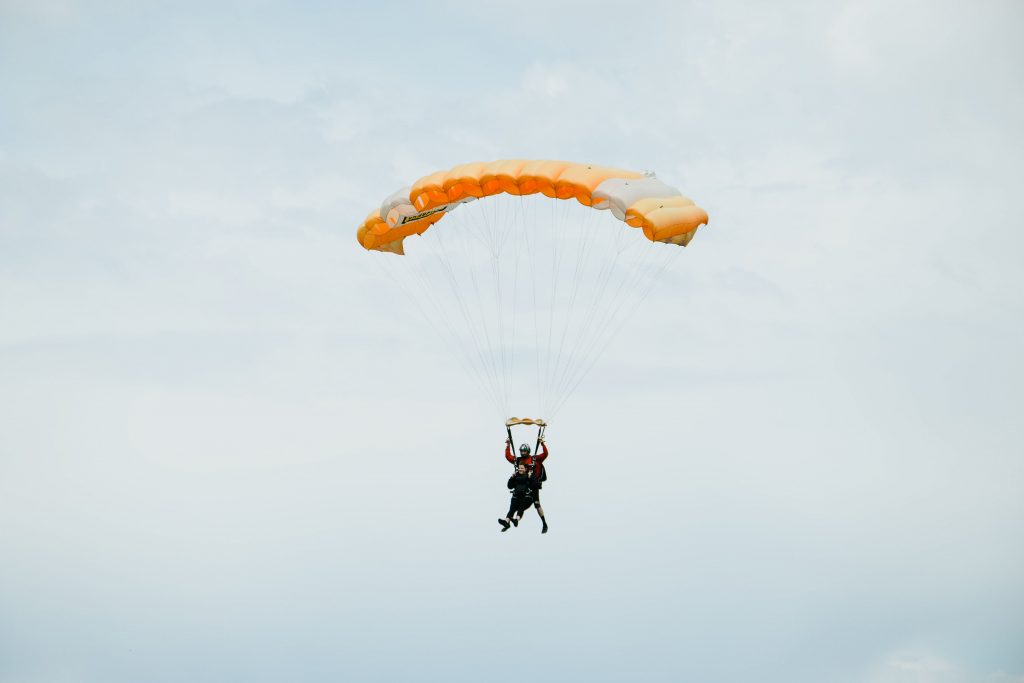
(photo/Unsplash)
What You Need To Know Before You Learn Sky Diving
• Don’t listen to people’s discouragements. Sky diving is not hard. You only need to have passion and commitment. Factors like age, eye coordination, and fitness make some people grasp skydiving faster than others.
• Indoor sky diving works like magic to quicken the learning process for those who find it difficult to position their body properly for a stable free fall.
• First-timers should consider taking a tandem skydive. It’s an excellent entry point to sky diving.
• The method used to train civilians to sky drive is known as Accelerated Free Fall (AFF). Students experience free falls from their first attempt. The training compromises seven skydives. In each skydive, you learn something new. You graduate from AFF to self-supervision after finishing the seven skydives successfully.
• To receive a license, you must have completed the training, done over 20 jumps, and passed the tests.
The above information gives you a clear mindset and what to expect in sky diving. We can now dive into learning the art.
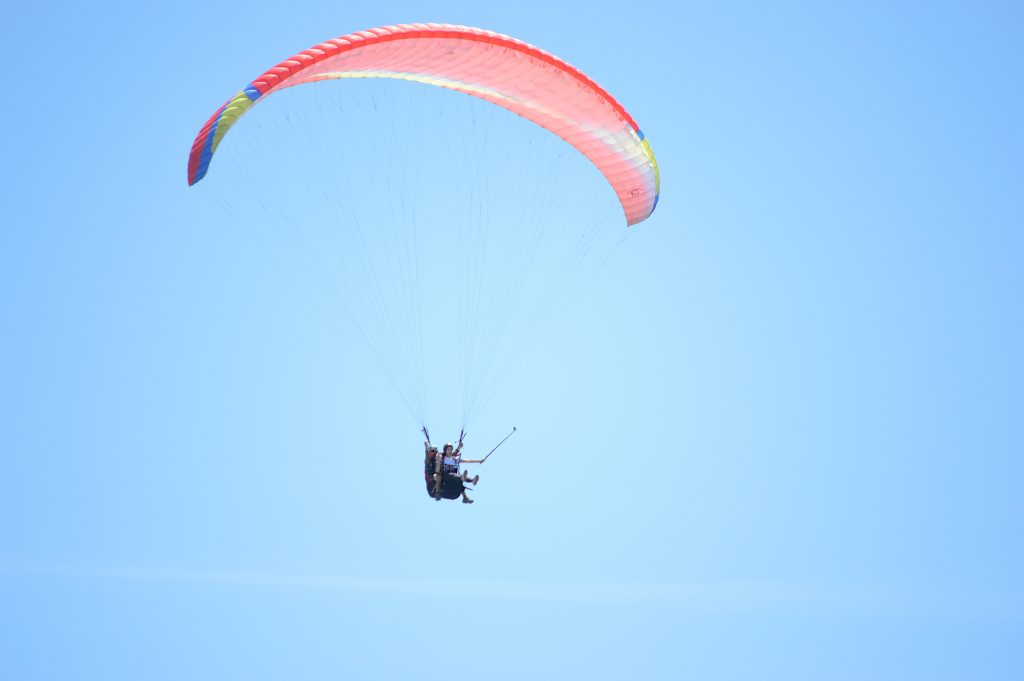
(photo/Unsplash)
A Step-By-Step Guide on How to Sky Dive
Step 1: Enroll in a Credible Sky Diving Training Facility
The first thing to do as a beginner is to search for a reputable sky diving school or trainer and enroll. You could find recommendations from experienced skydivers or reliable review sites.
An ideal sky diving training institute consists of skilled and dedicated instructors. The facility should also have everything you need to learn the art. Great examples include planes and skydiving equipment.
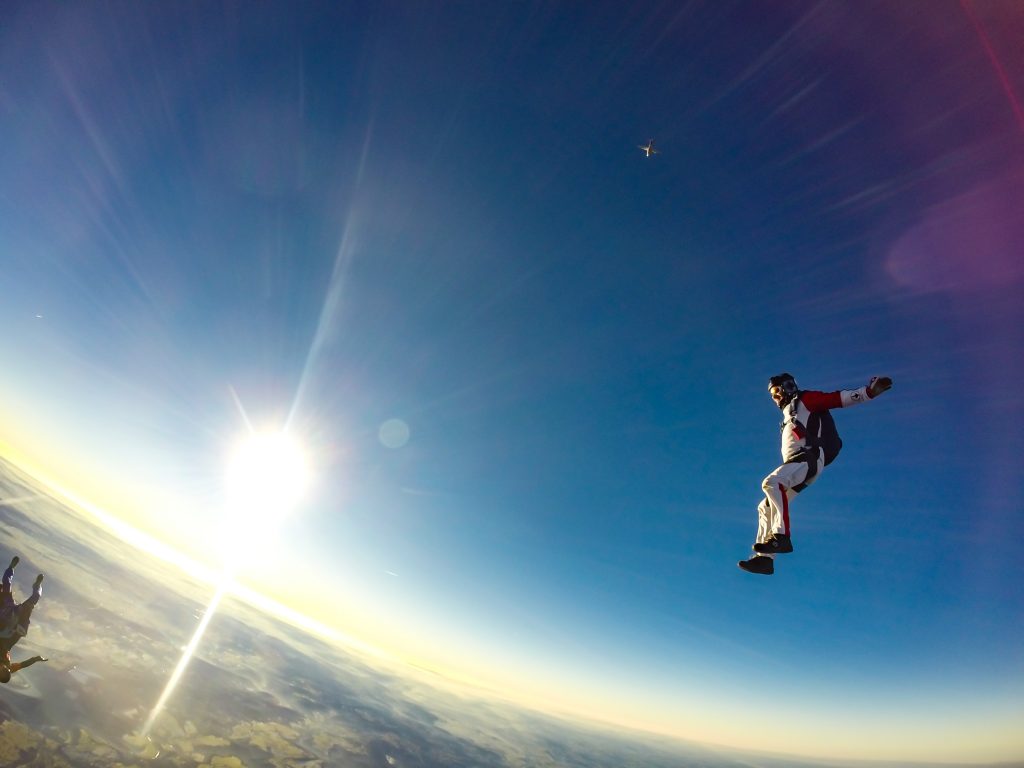
(photo/Unsplash)
Step 2: Comprehensive Ground Training
First, skydiving instructors will take you through comprehensive ground training at your pace. You learn fast if you are willing to put in the necessary effort.
Ground training includes learning about the equipment used, how they work, suitable diving gear, safety, and how to skydive and land on the ground.
Step 3: Make Your First Skydive
After ground training, you perform the tandem skydive. You leave the aircraft with one or two instructors. The trainers hold on to you and teach you some basics while on the parachute. Then they’ll instruct you to perform some tasks on your way down.
Instructors will guide you through deploying and steering the parachute downwards. Finally, the trainers guide you into landing safely at the designated location.
Step 4: Learn to Fly Forward
Now that you know some basics and have experienced your first dive, the trainers teach you how to steer the parachute forward. It’s only possible when your body is in a ‘delta’ position. Your instructors will show you as they hold on to you.
It takes several attempts to go through this step successfully. When you’ve grasped the skill, the trainers fly you down.
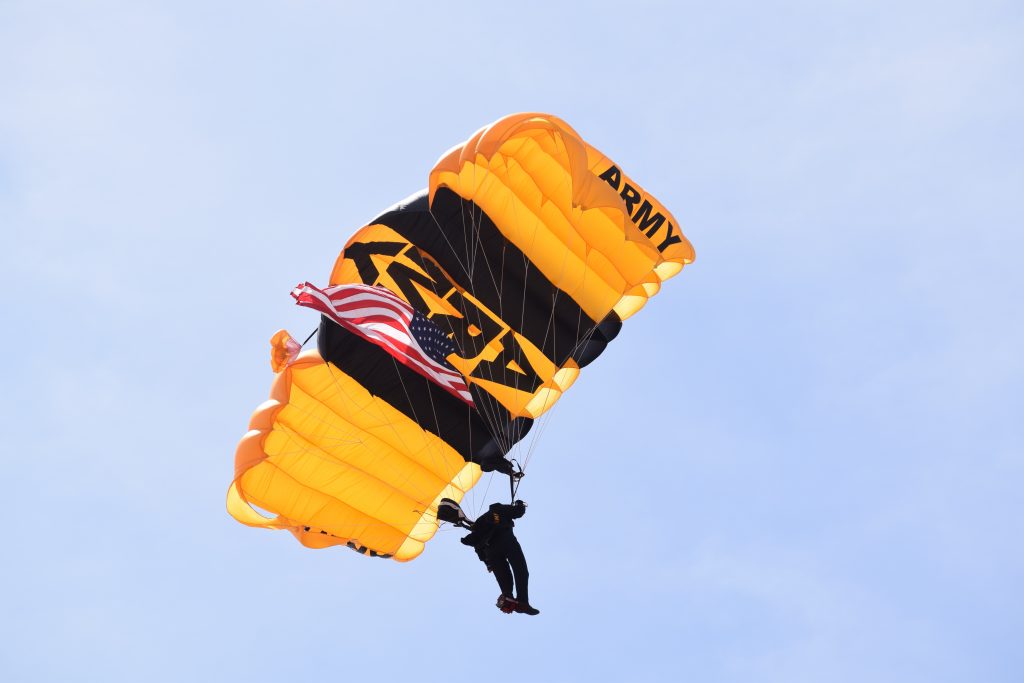
(photo/Unsplash)
Step 5: Learn To Control Turns
It’s in this step that the independence begins. First, the instructor allows you to exit the plane. Then they fly in front of you and teach you how to control turns and hover stably on the air column. In this step, the trainer may use some communication equipment for easier and more audible communication.
Step 6: Sky Dive from a Higher Level
Initially, the sky diving level was approximately 4,500 feet. Trainers take the lesson a notch higher after you learn how to propel the parachute forward, control turns, and stabilize on air.
The plane flies up to around 14,000 feet. If the instructor trusts your stability, they will release their grip on you but fly in your front. If not, they may hold on to you much longer until you securely stabilize in the air.
Step 7: Sky Dive Alone
It’s the step you do a solo exit. With all the training in the previous steps, you’ll have developed the guts to go for it. You learn how to do a 360 degrees body turn in this jump. After going down to approximately 3,500 feet, you should use the techniques learned to control and direct your parachute to the drop zone.
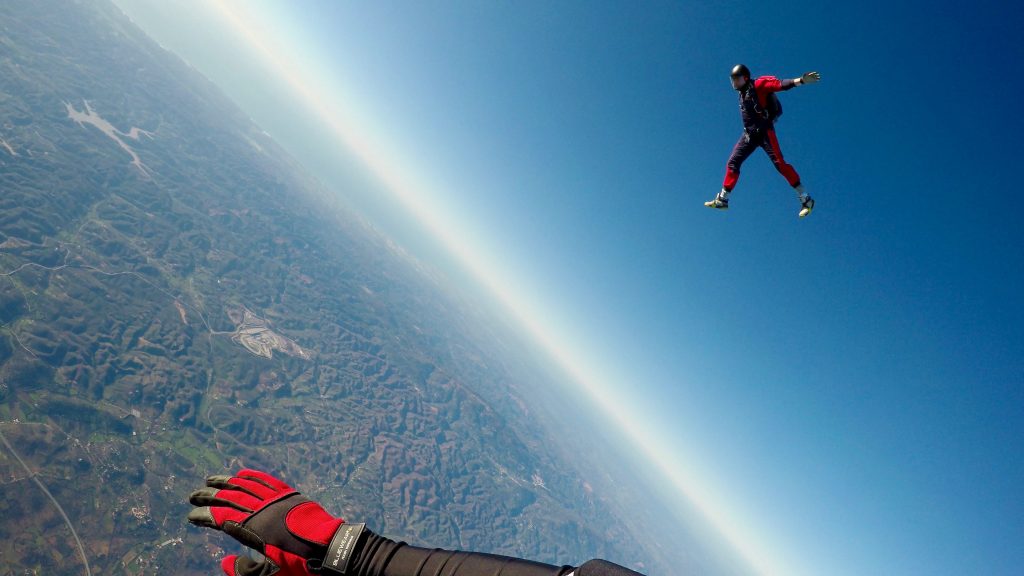
(photo/Unsplash)
Stage 8: More Practice
After diving alone and landing safely, your confidence will improve. You’ll need to repeat several skydives to practice all you’ve learned so far. Focus on the forward movement, turns, stabilizing the parachute, and safe landing. Remember, practice makes perfect.
Step 9: Learn How to Backflip
Once you’re done with the practice and have perfected your skills, you’re ready to learn the backflip.
First, you and your instructor exit the plane solely. Then the trainer demonstrates a backflip. You’re supposed to follow their lead and perform one.
Try performing the backflip at a distance from your trainer. You won’t want to crash on your jumpmaster! The practice should continue until you grasp the ropes of doing it.
Step 10: First Test
It’s the first test you undergo to check whether you’ve correctly learned the critical aspects of sky diving. First, you dive to exit. Then you control the parachute to a safe landing. The instructors will study your every move to see if you’re okay.

(photo/Unsplash)
Step 11: Final Step
If you pass step 10, you proceed to this final step. You’ll exit the plane from two altitude levels – 5,000 and 4,000 feet. You officially graduate and receive a license when you perform excellently. You can now navigate the skies and have fun.
Conclusion
As illustrated above, sky diving learning is straightforward but takes time and practice. The trainees experience fun and thrilling adventures as they learn. It’s even more exciting when you finally know how to skydive alone.
How soon you learn depends on certain factors such as the weather, your willingness and effort, and time restrictions. Avoid holding the learning urge any longer; start learning today and explore the skies like a pro! Use the above guide as your starting point.
If you want to go beyond being just a beginner at this or any other skill, and work toward developing a real mastery, then you are going to need a deeper and more powerful strategy. What you need is a way to hack your brain so you can develop a winning mindset.
A winning mindset is a state of mind that allows you to enter a flow state at will. You do this by programming your subconscious mind.
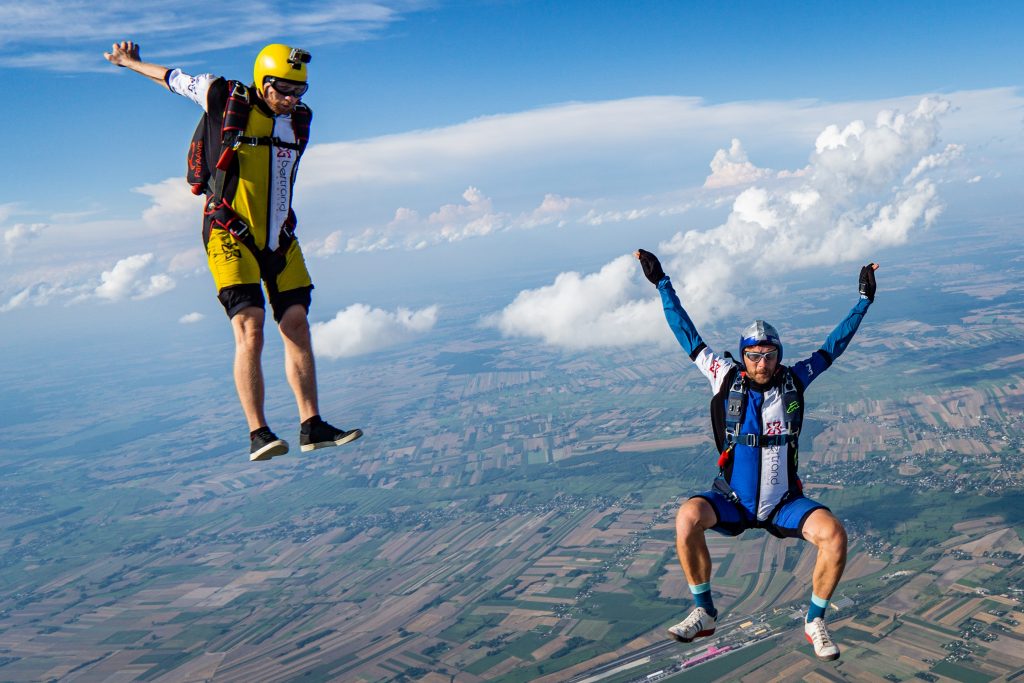
(photo/Unsplash)
Believe it or not, most of what you do throughout an average day is NOT freely chosen by your normal waking consciousness even though it may seem that way. The truth is that most of what you do on a day-to-day basis is done on autopilot. An example of this would be when you’re driving your car and as you do so you get bored and begin daydreaming. Before you know it, you find yourself several miles further down the road with absolutely NO memory of having driven those last several miles.
So, who exactly was driving while your waking consciousness was in la-la land, and how exactly did you manage to avoid an accident? Your subconscious mind was in control. You already spent years programming your subconscious with how to deal with a broad range of possible driving scenarios and thus it had no trouble taking the wheel while your waking consciousness took a little break. In other words, you were able to take effective actions without having to THINK about them.
The same way you programmed your subconscious to drive, you can also program it to automatically take successful actions toward mastering any other skill you decide that you want to learn. CLICK HERE to learn a proven, step-by-step formula to help you attain mastery at any skill you choose and achieve everything in life.
Source: by NEVIO GARDASANIC from amazines.com
